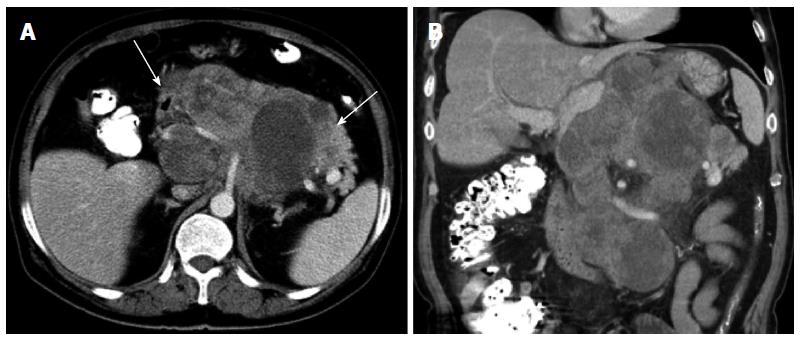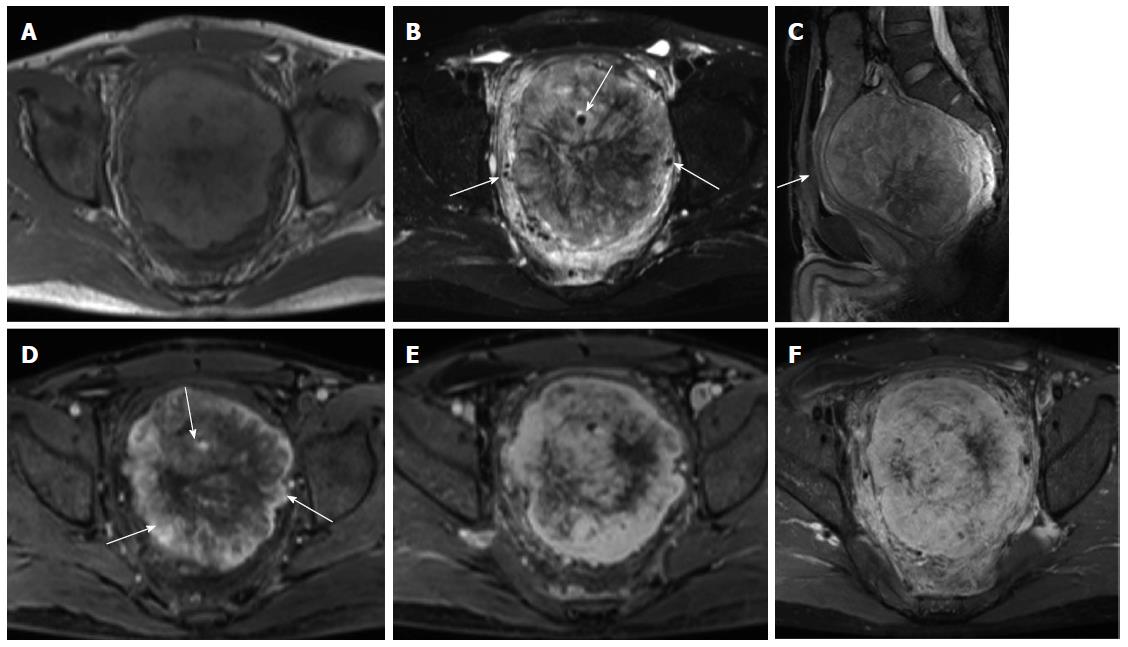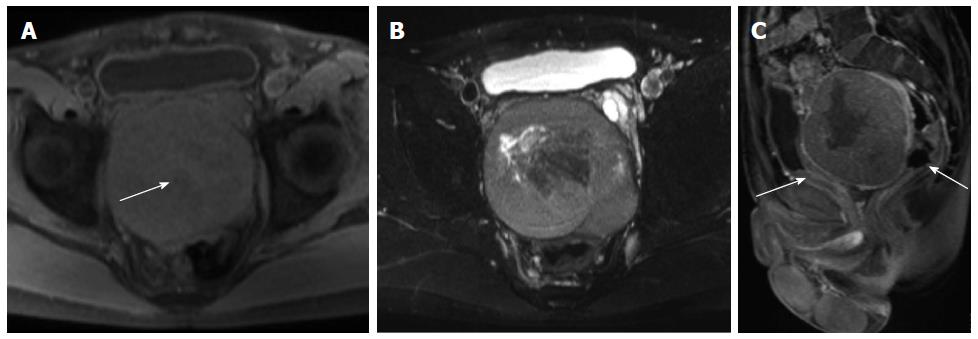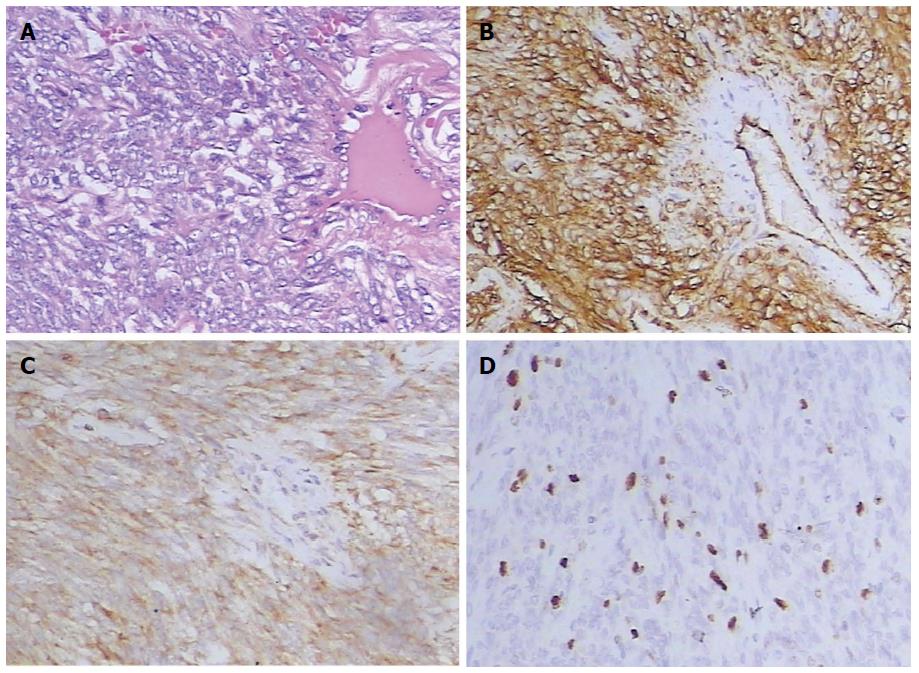Copyright
©2014 Baishideng Publishing Group Co.
World J Gastroenterol. May 7, 2014; 20(17): 5066-5073
Published online May 7, 2014. doi: 10.3748/wjg.v20.i17.5066
Published online May 7, 2014. doi: 10.3748/wjg.v20.i17.5066
Figure 1 Computed tomography findings of a solitary fibrous tumor in the retroperitoneum.
A: Contrast-enhanced axial image showing a lobulated, ill-defined, and heterogeneously moderate enhancing mass in the retroperitoneum. The mass invades the pancreas and stomach (arrows), and the celiac trunk and its branches were enveloped; B: The contrast-enhanced coronal reconstruction image shows envelopment of the branches of the celiac trunk.
Figure 2 Magnetic resonance images of a solitary fibrous tumor in the presacral space.
A: T1-weighted Magnetic resonance (MR) image showed that the mass is lobulated and almost isointense to the muscle. Radial hypointensity is seen in the center; B: Axial fat-suppressed T2-weighted MR image shows that the mass is predominantly hyperintense with radial areas of low signal intensity. In addition, intra- and extra-tumoral flow voids can be detected (arrows); C: Sagittal fat-suppressed T2-weighted MR image showing that the rectum is compressed anteriorly by the mass (arrow); D: The mass demonstrated intense heterogeneous enhancement in the arterial phase. The feeding vessels (vascular pedicle) can be demonstrated clearly (arrows); E, F: The mass showed persistent and progressive enhancement in the portal venous (E) and delayed phase (F).
Figure 3 Magnetic resonance images of a solitary fibrous tumor in the rectovesical space.
A: T1-weighted Magnetic resonance (MR) image showing an oval isointense mass with patchy mild hyperintensity (arrow). The patchy mild hyperintensity was proven to be a hemorrhage; B: Fat-suppressed T2-weighted MR images reveal a mass with heterogeneous hyperintensity and patchy hypointensity; C: Contrast-enhanced MR images demonstrate moderate heterogeneous enhancement of the mass, which displaces the bladder anteriorly and rectum posteriorly (arrows).
Figure 4 Pathologic features of the solitary fibrous tumor.
A: Hematoxylin and eosin staining, × 40, indicates monotonous spindle cell proliferation with a hemangiopericytoma-like vascular growth pattern; B-D: Immunohistochemical staining, x 40, indicates that the tumor is diffusely positive for CD34 (B) and Bcl-2 (C), and the proportion of Ki67 positive cells is 15% (D).
- Citation: Li XM, Reng J, Zhou P, Cao Y, Cheng ZZ, Xiao Y, Xu GH. Solitary fibrous tumors in abdomen and pelvis: Imaging characteristics and radiologic-pathologic correlation. World J Gastroenterol 2014; 20(17): 5066-5073
- URL: https://www.wjgnet.com/1007-9327/full/v20/i17/5066.htm
- DOI: https://dx.doi.org/10.3748/wjg.v20.i17.5066












